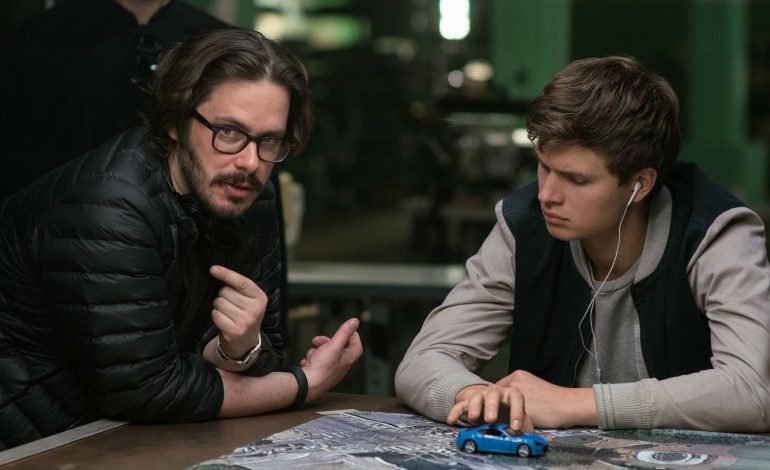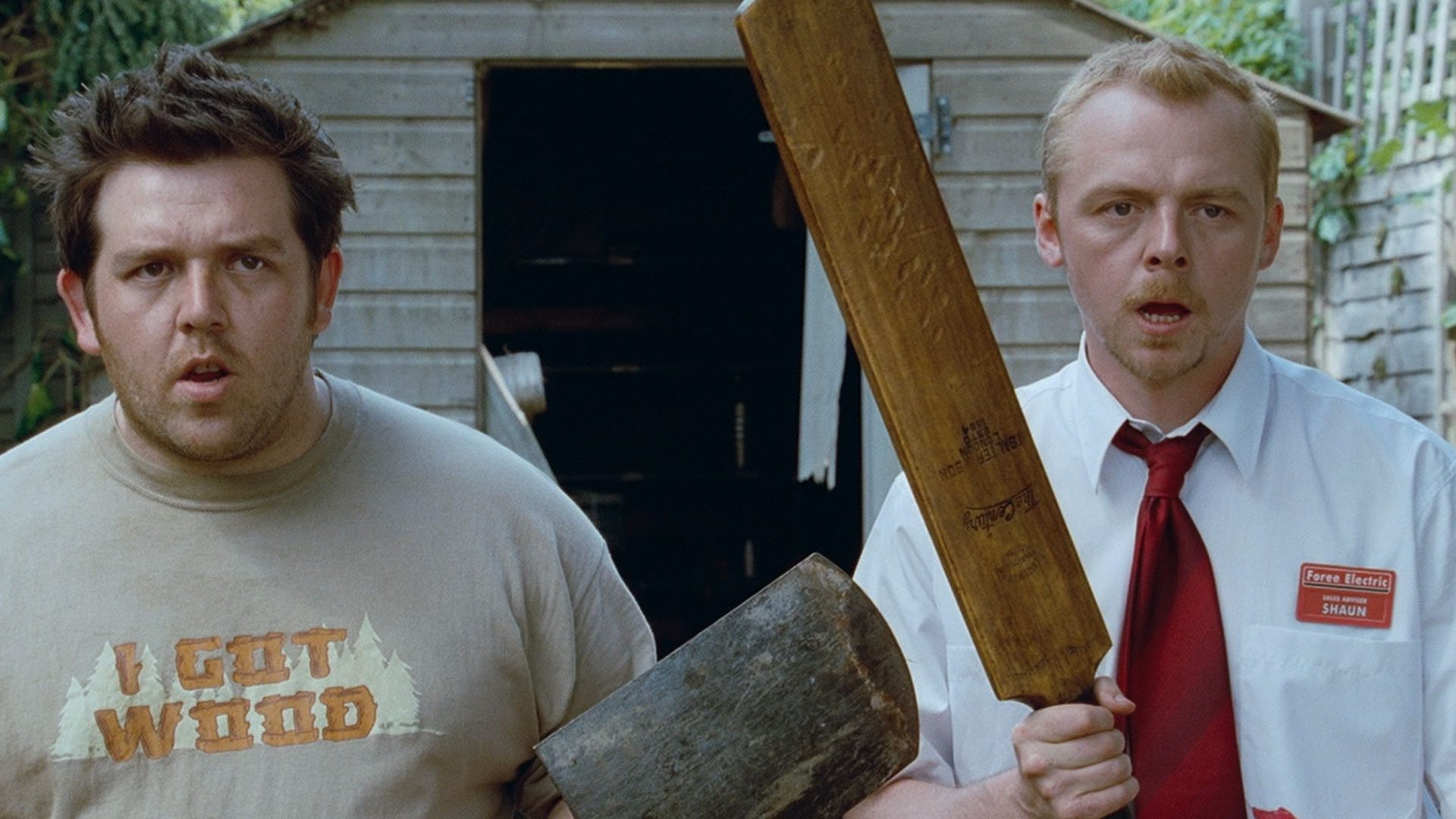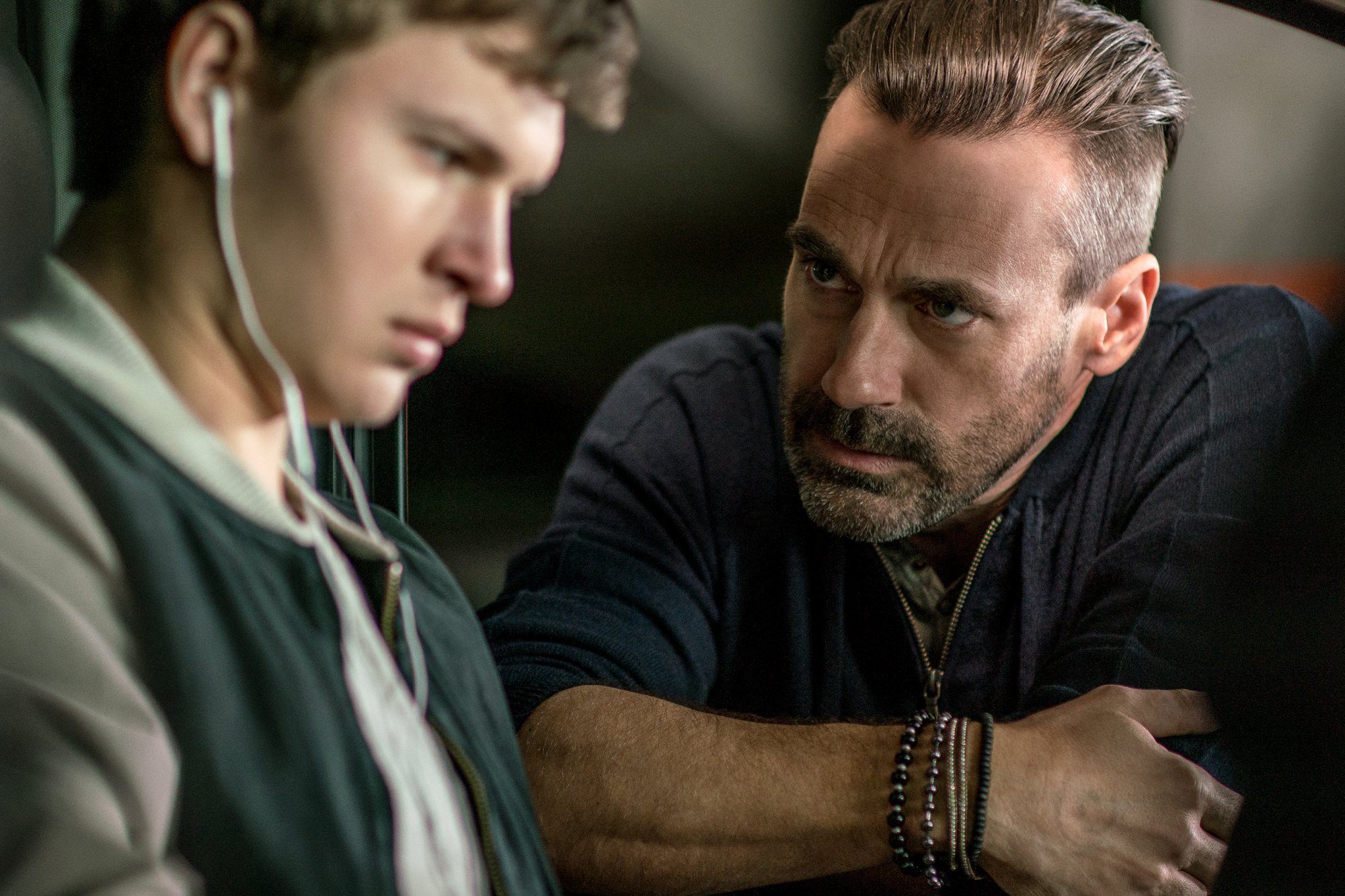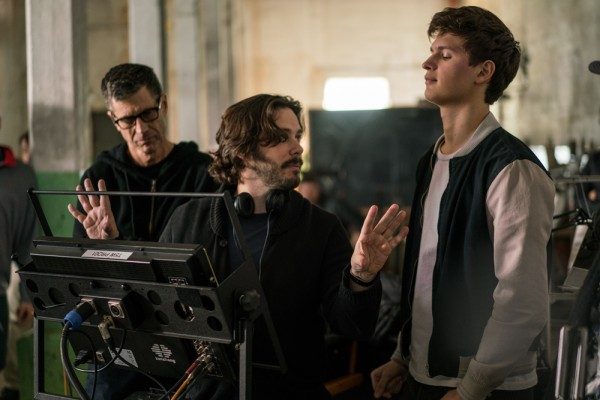

The following contains spoilers for Baby Driver.
With Baby Driver satisfying both critics and casual viewers alike at the theaters these days, many are applauding British director Edgar Wright for his wildly original action film. And yet, for those familiar with Wright’s previous work, there are a handful of scenes in the film that feel quite familiar. I’d point to this not as an instance of lazy filmmaking, but rather an example of stylistic consistency. Wright is known for using specific pop culture references for very particular purposes in all of his films, and Baby Driver is no exception. In fact, what we see in Baby Driver seems to be a carefully concocted mix of the strategies cultivated in Wright’s earlier films, all working together in service of a story and a visual experience that stand out vibrantly against the bland background of many of today’s stylistically similar action movies.
Arguably the most standout instance of one of Wright’s familiar cultural nods appearing in Baby Driver is his use of scenes flashing by on a television screen to foreshadow future events or to offer backstory. We’ve seen this before in several of Wright’s previous films, such as Shaun of the Dead, during a scene in which the lead character, aimless salesman Shaun, flips through channels on his television. Snippets of dialogue can be heard on each channel, ranging from news broadcasts to a televised performance by British band The Smiths. The dialogue from these various sources is strung together to form phrases such as, “There’s panic on the streets of London as an increasing number of reports of serious attacks on people who are literally being eaten alive…” These bits of dialogue foreshadow the zombie apocalypse that Shaun later faces in the film.
A similar strategy is used in Wright’s film Hot Fuzz, where the two protagonists Nick and Danny watch a scene from the film Point Break in which Keanu Reeves chooses to fire his gun skyward to avoid shooting his friend. Later, Hot Fuzz’s Danny fires his own gun into the air when he is unable to shoot his father.
In Baby Driver, Wright kicks this technique into overdrive, even referencing his own previous work. When the titular getaway driver Baby returns to his apartment after a thrilling escape from the police, he flips through channels on TV and several notable scenes from other films appear, including a quick shot from Wright’s own music video for British duo Mint Royale’s “Blue Song.” Baby Driver is actually an expansion of an idea Wright introduced in this music video, which follows a band of bank robbers ferried by a music-obsessed driver. In the context of the new film, aside from serving as a nod to Wright’s past work, this video playing in Baby’s apartment while both Baby and his foster father look on suggests the pervasiveness of Baby’s own career and the potential for this dangerous work to invade and threaten the rest of his life.
Perhaps the most obvious example of direct foreshadowing in this early channel surfing sequence is the bull fighting documentary that Baby flips through, in which the narrator can be heard saying, “The bull sees nothing but red, Gaston is running out of options. He began this on horseback and must now finish it on foot.” This dialogue clearly hints at Baby’s final showdown with the bank robber Buddy at the end of the film. Baby begins the scene in a car, facing off against a murderous Buddy who sits behind the wheel of a police cruiser, literally bathed in red light. Eventually, Baby has to abandon his vehicle and finish the fight on foot.
But Wright pushes this technique far beyond a simple means of foreshadowing in Baby Driver, actually borrowing dialogue from the scenes glimpsed on TV to use later in the film. For instance, a brief snippet of Monsters, Inc. that Baby catches on television influences him to quote the character Mike Wazowski two separate times in the movie. On both occasions, Baby is conversing with his boss, Doc, and, in an attempt to reaffirm their working relationship, he says, “You and I are a team. Nothing is more important than our friendship.” In the second instance, having become fed up with Baby’s distrustful behavior, Doc hilariously calls him out on repeatedly quoting a children’s animated film.
Much of the other pop culture references in Baby Driver relate to music in some way, and again this is a traditional hallmark of Wright’s work. The director likes to use well-known songs as a method of characterization by displaying his characters’ relationships to the songs, though he varies the way in which he pulls this off. In Shaun of the Dead, As Shaun and his friend Ed attempt to neutralize zombies, they resort to throwing records from Shaun’s personal collection at their attackers. In the heat of battle, Ed asks Shaun which records will be acceptable to throw. Shaun’s split-second choices convey not only his musical taste, but also his uniquely judgmental personality. He refuses to allow Ed to throw albums such as Purple Rain and Sign of the Times, but immediately approves the Batman soundtrack and a Dire Straits album for use as a disposable weapon. The audience understands the type of person Shaun is simply from his musical selections in this scene.
Similarly, in Baby Driver, Baby and Buddy share a bonding moment over the fact that they both love the song “Brighton Rock.” The scene paints Buddy as less of an obvious bad guy and more of a reasonably good-natured criminal whose dark turn toward the film’s conclusion thus becomes all the more surprising.
One final trademark of Wright’s pop culture obsession is his inclusion of sequences carefully timed to music, a strategy commonly referred to as Mickey Mousing. This technique can be found all over Wright’s filmography, usually used for comedic effect and to set the tone in action scenes. In Shaun of the Dead, Shaun, Ed and Liz smack a zombie with pool cues in time to Queen’s “Don’t Stop Me Now.” Wright’s comic book-based action film Scott Pilgrim vs. the World includes a Bollywood-influenced musical fight scene in which every punch, duck and jump matches the beat of the music. And the director’s pub crawl sci-fi farce The World’s End features a drinking song punctuated by the perfectly-timed burps and sighs of the lead characters.
Mickey Mousing has an almost constant presence in Baby Driver, as songs play in the background of nearly every scene and practically all of the actors’ movements are timed to the music. From a long tracking shot in which Baby walks to a coffee shop to the tune of “Harlem Shuffle” to a sequence late in the film where Bats, Buddy, Darling and Baby find themselves in a shootout with undercover cops as “Tequila” buzzes in Baby’s earbuds, everything is synchronized to music. This again is one of Wright’s traditional strategies being pushed to an extreme, and the effect is nothing if not technically impressive and hypnotically watchable.
While Baby Driver has certainly established itself as a one-of-a-kind action film and a unique entry in Edgar Wright’s catalogue, shades of the director’s previous work are undeniably present. Some may view his incessant references to cultural iconography as repetitive filmmaking, but I see it more as Wright settling into the trademark style he has established over the course of his career. He chooses to exaggerate the use of certain techniques and yet downplay others in Baby Driver, altering his formula as he has done with each of his films and selecting the proper tools from his belt to serve the purposes required by the film’s story and characters. The result is a unique and technically innovative film that still comfortably fits the label of an Edgar Wright movie.




